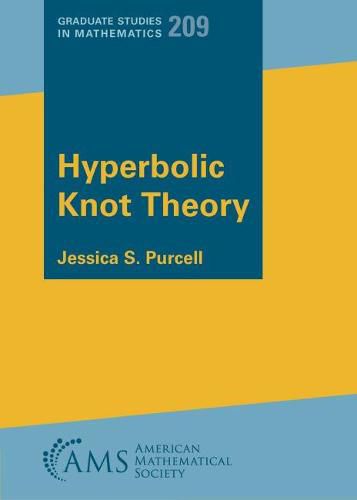Readings Newsletter
Become a Readings Member to make your shopping experience even easier.
Sign in or sign up for free!
You’re not far away from qualifying for FREE standard shipping within Australia
You’ve qualified for FREE standard shipping within Australia
The cart is loading…






This book provides an introduction to hyperbolic geometry in dimension three, with motivation and applications arising from knot theory. Hyperbolic geometry was first used as a tool to study knots by Riley and then Thurston in the 1970s. By the 1980s, combining work of Mostow and Prasad with Gordon and Luecke, it was known that a hyperbolic structure on a knot complement in the 3-sphere gives a complete knot invariant. However, it remains a difficult problem to relate the hyperbolic geometry of a knot to other invariants arising from knot theory. In particular, it is difficult to determine hyperbolic geometric information from a knot diagram, which is classically used to describe a knot. This textbook provides background on these problems, and tools to determine hyperbolic information on knots. It also includes results and state-of-the art techniques on hyperbolic geometry and knot theory to date.
The book was written to be interactive, with many examples and exercises. Some important results are left to guided exercises. The level is appropriate for graduate students with a basic background in algebraic topology, particularly fundamental groups and covering spaces. Some experience with some differential topology and Riemannian geometry will also be helpful.
$9.00 standard shipping within Australia
FREE standard shipping within Australia for orders over $100.00
Express & International shipping calculated at checkout
This book provides an introduction to hyperbolic geometry in dimension three, with motivation and applications arising from knot theory. Hyperbolic geometry was first used as a tool to study knots by Riley and then Thurston in the 1970s. By the 1980s, combining work of Mostow and Prasad with Gordon and Luecke, it was known that a hyperbolic structure on a knot complement in the 3-sphere gives a complete knot invariant. However, it remains a difficult problem to relate the hyperbolic geometry of a knot to other invariants arising from knot theory. In particular, it is difficult to determine hyperbolic geometric information from a knot diagram, which is classically used to describe a knot. This textbook provides background on these problems, and tools to determine hyperbolic information on knots. It also includes results and state-of-the art techniques on hyperbolic geometry and knot theory to date.
The book was written to be interactive, with many examples and exercises. Some important results are left to guided exercises. The level is appropriate for graduate students with a basic background in algebraic topology, particularly fundamental groups and covering spaces. Some experience with some differential topology and Riemannian geometry will also be helpful.